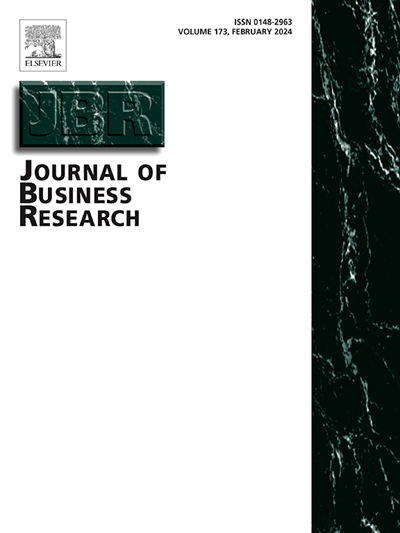The impact of influence tactics on brand message sharing
IF 10.5
1区 管理学
Q1 BUSINESS
引用次数: 0
Abstract
Brand message sharing is a crucial outcome of social media marketing. This research draws on the conceptual framework of influence tactics to provide insights into how specific tactics—internalization (e.g., offering objective information), compliance (e.g., exerting demands), and ingratiation (e.g., expressing emotions)— embedded in brand communications impact brand message sharing. By developing a machine learning model, this study analyzes a dataset of 893,054 brand-related tweets from 122 S&P 500 brands and demonstrates that these three influence tactics significantly enhance brand message sharing. In particular, ingratiation exerts a stronger influence on brand message sharing compared to internalization and compliance. Moreover, a high level of consistency or a high level of variation in the influence tactics used in sequences of posted messages boosts brand message sharing. Additionally, tailoring ingratiation and compliance tactics to feminine and masculine brand names, respectively, can further enhance the effectiveness of brand message sharing.
影响力策略对品牌信息分享的影响
品牌信息分享是社交媒体营销的一个重要成果。本研究利用影响策略的概念框架,深入了解嵌入品牌传播中的特定策略——内化(例如,提供客观信息)、顺从(例如,施加要求)和讨好(例如,表达情感)如何影响品牌信息共享。通过开发机器学习模型,本研究分析了来自122个标普500品牌的893,054条品牌相关推文的数据集,并证明这三种影响策略显著增强了品牌信息共享。特别是,与内化和顺从相比,讨好对品牌信息分享的影响更大。此外,在发布的信息序列中使用的影响策略的高度一致性或高度变化会促进品牌信息的共享。此外,针对女性化的品牌名称和男性化的品牌名称,分别采用迎合策略和顺从策略,可以进一步提高品牌信息分享的有效性。
本文章由计算机程序翻译,如有差异,请以英文原文为准。
求助全文
约1分钟内获得全文
求助全文
来源期刊

Journal of Business Research
BUSINESS-
CiteScore
20.30
自引率
10.60%
发文量
956
期刊介绍:
The Journal of Business Research aims to publish research that is rigorous, relevant, and potentially impactful. It examines a wide variety of business decision contexts, processes, and activities, developing insights that are meaningful for theory, practice, and/or society at large. The research is intended to generate meaningful debates in academia and practice, that are thought provoking and have the potential to make a difference to conceptual thinking and/or practice. The Journal is published for a broad range of stakeholders, including scholars, researchers, executives, and policy makers. It aids the application of its research to practical situations and theoretical findings to the reality of the business world as well as to society. The Journal is abstracted and indexed in several databases, including Social Sciences Citation Index, ANBAR, Current Contents, Management Contents, Management Literature in Brief, PsycINFO, Information Service, RePEc, Academic Journal Guide, ABI/Inform, INSPEC, etc.
 求助内容:
求助内容: 应助结果提醒方式:
应助结果提醒方式:


